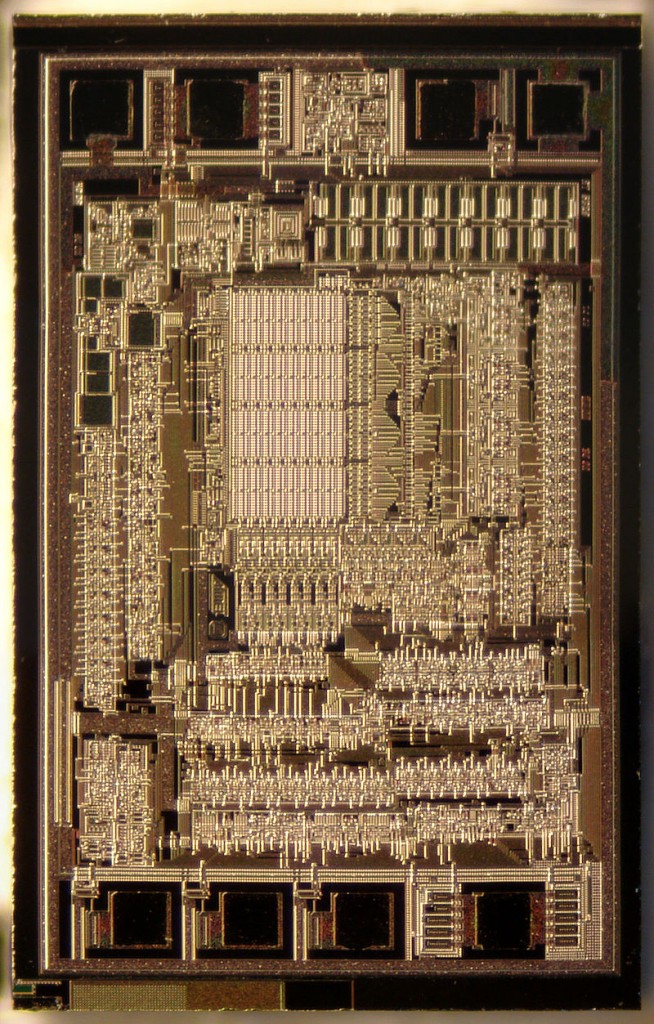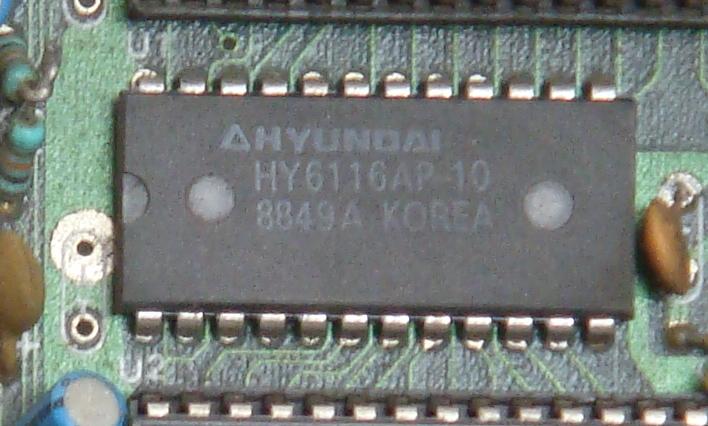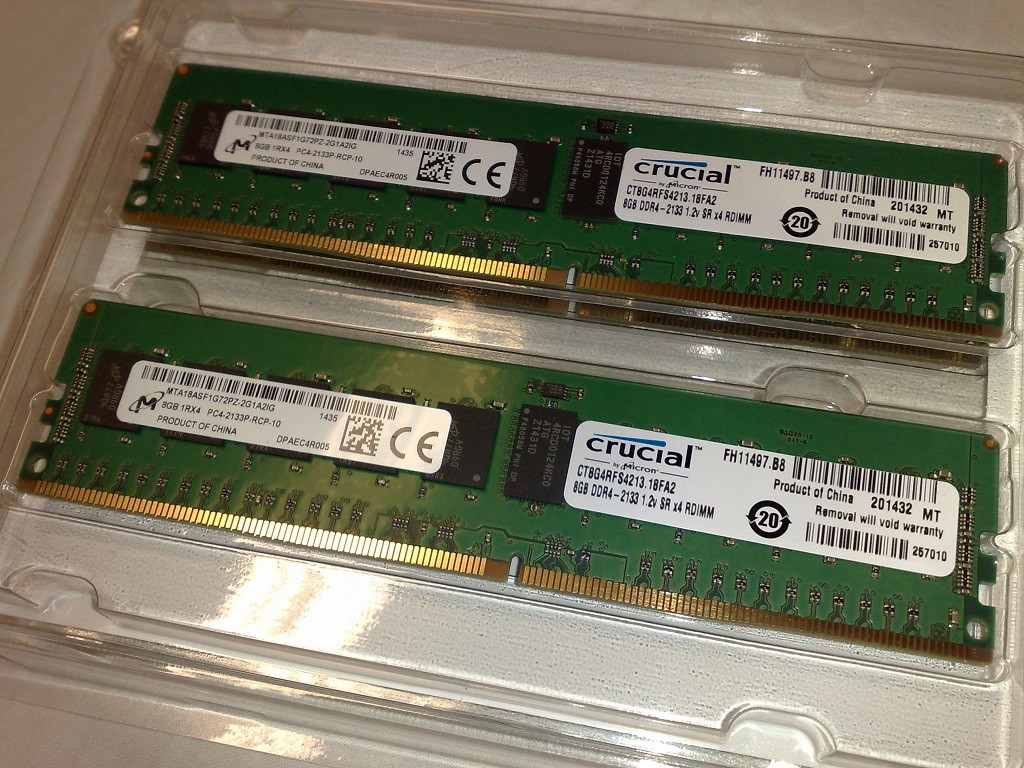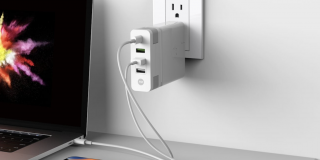Computer Memory Types And How They Affect Your Computer
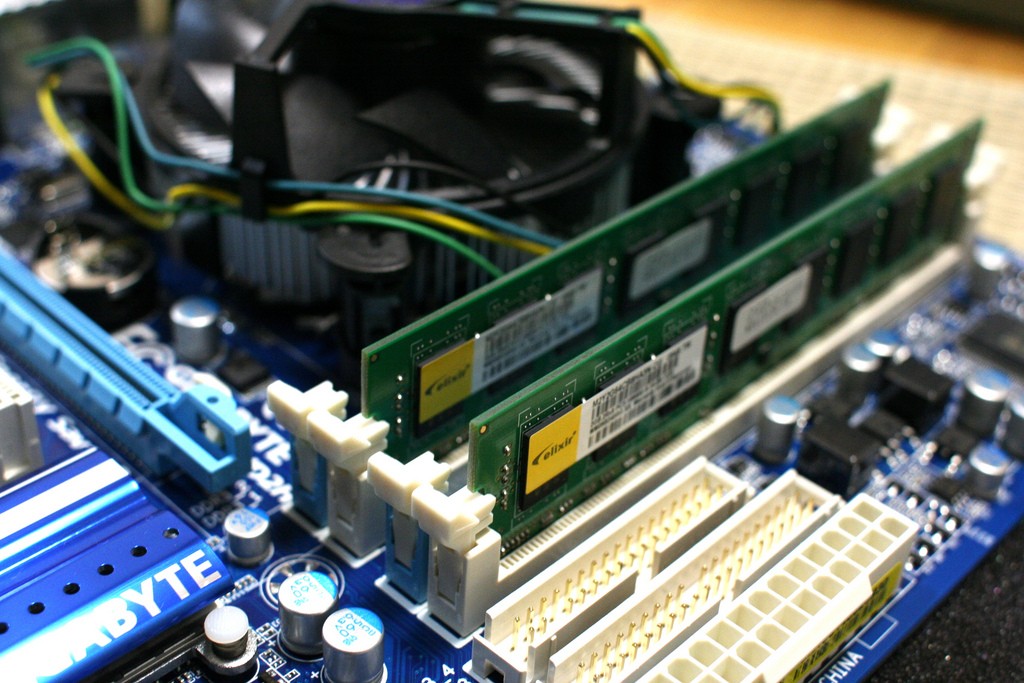
The memory your computer uses can be a big part of how the computer functions and how quickly it can perform. If you’re building a computer, however, it can be hard to know what to pick or why. That’s why we’ve put together this guide.
There are several different technologies when it comes to memory. Here is an overview of these technologies and what they mean to your computer.
Editors note: This article, originally published in 2007, was updated on in November 2016 with more current information on the latest memory technologies.
ROM
ROM is basically a read-only memory, or memory that can be read but not written to. ROM is used in situations where the data being stored has to be held permanently. That’s because it’s a non-volatile memory — in other words the data is “hard-wired” into the chip. You can store that chip forever and the data will always be there, making that data very secure. The BIOS is stored on ROM because the user cannot disrupt the information.
There are also a number of different types of ROM:
Programmable ROM (PROM):
This is basically a blank ROM chip that can be written to, but only once. It is much like a CD-R drive that burns the data into the CD. Some companies use special machinery to write PROMs for special purposes. The PROM was first invented way back in 1956.
Erasable Programmable ROM (EPROM):
This is just like PROM, except that you can erase the ROM by shining a special ultra-violet light into a sensor atop the ROM chip for a certain amount of time. Doing this wipes the data out, allowing it to be rewritten. EPROM was first invented in 1971.
Electrically Erasable Programmable ROM (EEPROM):
Also called flash BIOS. This ROM can be rewritten through the use of a special software program. Flash BIOS operates this way, allowing users to upgrade their BIOS. EEPROM was first invented in 1977.
ROM is slower than RAM, which is why some try to shadow it to increase speed.
RAM
Random Access Memory (RAM) is what most of us think of when we hear the word “memory” associated with computers. It is volatile memory, meaning all data is lost when power is turned off. RAM is used for temporary storage of program data, allowing performance to be optimized.
Like ROM, there are different types of RAM. Here are the most common different types.
Static RAM (SRAM)
This RAM will maintain it’s data as long as power is provided to the memory chips. It does not need to be re-written periodically. In fact, the only time the data on the memory is refreshed or changed is when an actual write command is executed. SRAM is very fast, but is much more expensive than DRAM. SRAM is often used as cache memory due to its speed.
There are a few types of SRAM:
Async SRAM:
An older type of SRAM used in many PC’s for L2 cache. It is asynchronous, meaning that it works independently of the system clock. This means that the CPU found itself waiting for info from the L2 cache. Async SRAM began being used a lot in the 1990s.
Sync SRAM:
This type of SRAM is synchronous, meaning it is synchronized with the system clock. While this speeds it up, it makes it rather expensive at the same time. Sync SRAM became more popular in the late 1990s.
Pipeline Burst SRAM:
Commonly used. SRAM requests are pipelined, meaning larger packets of data re sent to the memory at once, and acted on very quickly. This breed of SRAM can operate at bus speeds higher than 66MHz, so is often used. Pipeline Burst SRAM was first implemented in 1996 by Intel.
Dynamic RAM (DRAM)
DRAM, unlike SRAM, must be continually re-written in order for it to maintain its data. This is done by placing the memory on a refresh circuit that re-writes the data several hundred time per second. DRAM is used for most system memory because it is cheap and small.
There are several types of DRAM, complicating the memory scene even more:
Fast Page Mode DRAM (FPM DRAM):
FPM DRAM is only slightly faster than regular DRAM. Before there was EDO RAM, FPM RAM was the main type used in PC’s. It is pretty slow stuff, with an access time of 120 ns. It was eventually tweaked to 60 ns, but FPM was still too slow to work on the 66MHz system bus. For this reason, FPM RAM was replaced by EDO RAM. FPM RAM is not much used today due to its slow speed, but is almost universally supported.
Extended Data Out DRAM (EDO DRAM):
EDO memory incorporates yet another tweak in the method of access. It allows one access to begin while another is being completed. While this might sound ingenious, the performance increase over FPM DRAM is only around 30%. EDO DRAM must be properly supported by the chipset. EDO RAM comes on a SIMM. EDO RAM cannot operate on a bus speed faster than 66MHz, so, with the increasing use of higher bus speeds, EDO RAM has taken the path of FPM RAM.
Burst EDO DRAM (BEDO DRAM):
Original EDO RAM was too slow for the newer systems coming out at the time. Therefore, a new method of memory access had to be developed to speed up the memory. Bursting was the method devised. This means that larger blocks of data were sent to the memory at a time, and each “block” of data not only carried the memory address of the immediate page, but info on the next several pages. Therefore, the next few accesses would not experience any delays due to the preceding memory requests. This technology increases EDO RAM speed up to around 10 ns, but it did not give it the ability to operate stably at bus speeds over 66MHz. BEDO RAM was an effort to make EDO RAM compete with SDRAM.
Synchronous DRAM (SDRAM):

SDRAM became the new standard after EDO bit the dust. Its speed is synchronous, meaning that it is directly dependent on the clock speed of the entire system. Standard SDRAM can handle higher bus speeds. In theory, it could operate at up to 100MHz, although it was found that many other variable factors went into whether or not it could stabily do so. The actual speed capacity of the module depended on the actual memory chips as well as design factors in the memory PCB itself.
To get around the variability, Intel created the PC100 standard. The PC100 standard ensures compatibility of SDRAM subsystems with Intel’s 100MHz FSB processors. The new design, production, and test requirements created challenges for semiconductor companies and memory module suppliers. Each PC100 SDRAM module required key attributes to guarantee full compliance, such as the use of 8ns DRAM components (chips) that are capable of operating at 125MHz. This provided a margin of safety in ensuring that that the memory module could run at PC100 speeds. Additionally, SDRAM chips must be used in conjunction with a correctly programmed EEPROM on a properly designed printed circuit board. The shorter the distance the signal needs to travel, the faster it runs. For this reason, there were additional layers of internal circuitry on PC100 modules.
As PC speeds increased, the same problem was encountered for the 133 MHz bus, so the PC133 standard was developed. SDRAM first appeared in the early 1970s and was used until the mid 1990s.
RAMBus DRAM (RDRAM):
Developed by Rambus, Inc. and endorsed by Intel as the chosen successor to SDRAM. RDRAM narrows the memory bus to 16-bit and runs at up to 800 MHz. Since this narrow bus takes up less space on the board, systems can get more speed by running multiple channels in parallel. Despite the speed, RDRAM has had a tough time taking off in the market because of compatibility and timing issues. Heat is also an issue, but RDRAM has heatsinks to dissipate this. Cost is a major issue with RDRAM, with manufacturers needing to make major facility changes to make it and the product cost to consumers being too high for people to swallow. The first motherboards with RDRAM support came out in 1999.
DDR-SDRAM (DDR):
This type of memory is the natural evolution from SDRAM and most manufacturers prefer this to Rambus because not much needs to be changed to make it. Also, memory makers are free to manufacture it because it is an open standard, whereas they would have to pay license fees to Rambus, Inc. in order make RDRAM. DDR stands for Double Data Rate. DDR shuffles data over the bus over both the rise and fall of the clock cycle, effectively doubling the speed over that of standard SDRAM.
Due to its advantages over RDRAM, DDR-SDRAM support was implemented by almost all major chipset manufacturers, and quickly became the new memory standard for the majority of PC’s. Speeds ranged from 100mhz DDR (with operating speed of 200MHz), or pc1600 DDR-SDRAM, all the way to current rates of 200mhz DDR (with operating speed of 400MHz), or pc3200 DDR-SDRAM. Some memory manufactures produce even faster DDR-SDRAM memory modules which readily appeal to the overclocker crowd. DDR was developed between 1996 and 2000.
DDR-SDRAM 2 (DDR2):
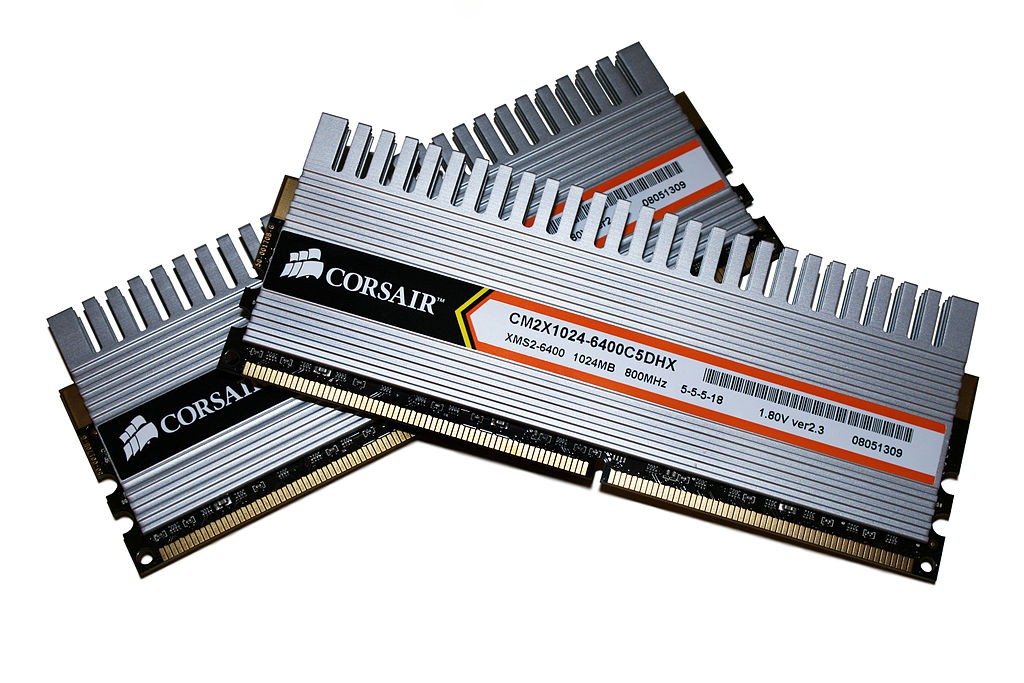
DDR2 features several advantages over conventional DDR-SDRAM (DDR), with the main one being that in each memory cycle DDR2 now transmits for 4 bits of information from logical (internal) memory to the I/O buffers. standard DDR-SDRAM only transmits 2 bits of information each memory cycle. Because of this, normal DDR-SDRAM requires the internal memory and I/O buffers to both operate at 200MHz to reach a total external operating speed of 400MHz.
Due to DDR2’s ability to transmit twice as many bits per cycle from logical (internal) memory to the I/O buffers (this technology is formally known as 4 bit prefetch), the internal memory speed can actually run at 100MHz instead of 200MHz, and the total external operating speed will still be 400MHz. Mainly what all this comes down to is that DDR-SDRAM 2 will be able to operate at higher total operating frequencies thanks to its 4 bit prefetch technology (e.g. a 200mhz internal memory speed would yield a total external operating speed of 800mhz!) than DDR-SDRAM.
DDR2 was first implemented in 2003.
DDR-SDRAM 3 (DDR3):
One of the main advantages of DDR3 over the likes of DDR2 and DDR is its focus on low power consumption. In other words, the same amount of RAM consumes a lot less power, so you can increase the amount of RAM you’re using for the same amount of power. How much does it reduce power consumption? By a hefty 40 percent, sitting at 1.5V compared to DDR2’s 1.8V. Not only that, but the transfer rate of the RAM is quite a bit faster, sitting between 800mHz – 1600mHz.
The buffer rate is also significantly higher — DDR3’s preferred buffer rate is 8 bit, while DDR2’s is 4 bit. That basically means that the RAM can transmit twice as many bits per cycle as DDR2, and it transmits 8 bits of data from the memory to the I/O buffers. DDR3 isn’t the most recent form of RAM, but it is used on many computers. DDR3 was launched in 2007.
DDR-SDRAM 4 (DDR4):
Next up is DDR4, which takes the power savings to the next level — the operating voltage of DDR4 RAM is 1.2V. Not only that, but DDR4 RAM offers a higher transfer rate too, sitting at up to 3200mHz. On top of that, DDR4 adds four Bank Groups, each of which can singlehandedly take on an operation, meaning that the RAM can handle four sets of data per cycle. That makes it far more efficient than DDR3.
DDR4 takes things a step further, too, bringing DBI, or Data Bus Inversion. What does that mean? If DBI is enabled, it basically counts the number of “0” bits in a single lane. If there are 4 or more, the byte if data is inverted and a ninth bit is added to the end, ensuring that five or more bits are “1.” What that does is it reduces data transmission delay, ensuring that as little power as possible is used. DDR5 RAM is currently the standard on most computers, however DDR5 is set to be finalized as a standard by the end of 2016. DDR4 was launched in 2014.
Non-volatile RAM (NVRAM):
Non-volatile RAM is a type of memory that, unlike other types of memory, doesn’t lose its data when it loses power. The best known form of NVRAM is actually flash storage, used in solid-state drives and USB drives. It doesn’t, however, come without its drawbacks — for example, it has a finite number of write cycles, and after that number the memory will start to deteriorate. Not only that, but it has some performance limitations that prevent it from being able to access data as fast as some other types of RAM.
Closing
Suffice to say, there are a lot of different memory types. With this guide, we hope we made it clear what the different types of RAM, what they do and how they affect your computer.
Got questions? Be sure to leave us a comment below or join us over in the PCMech Forums!




